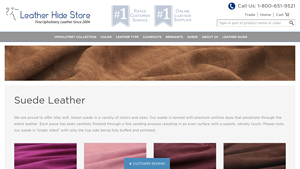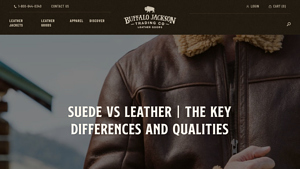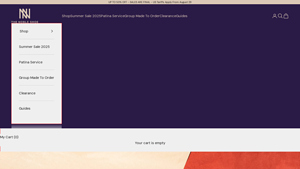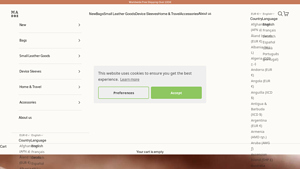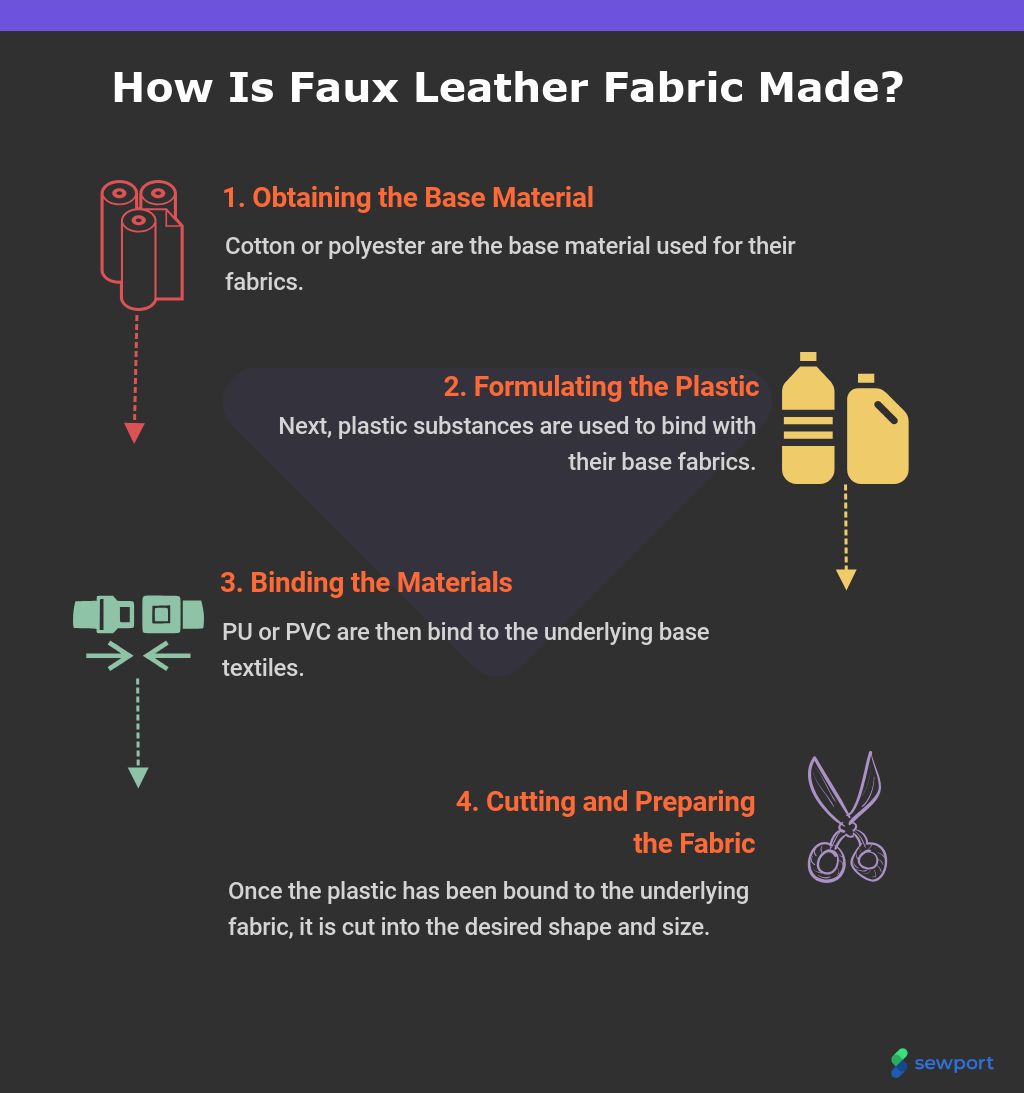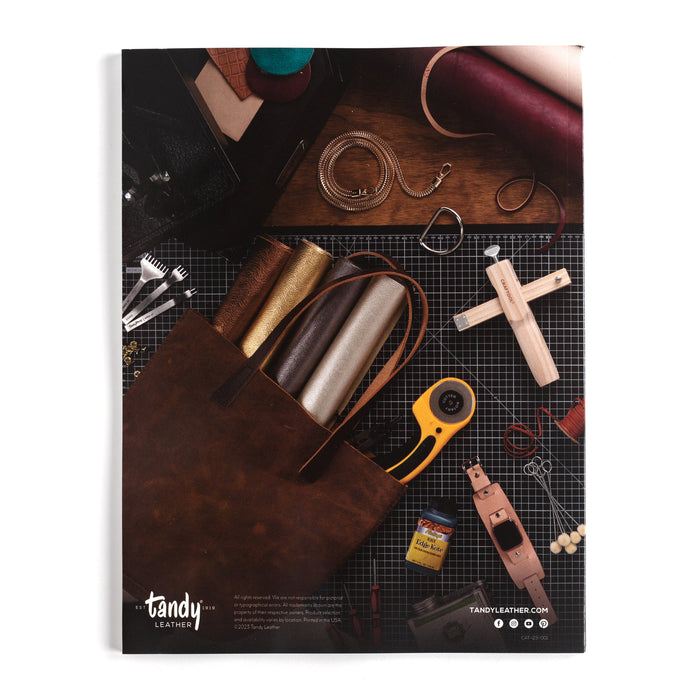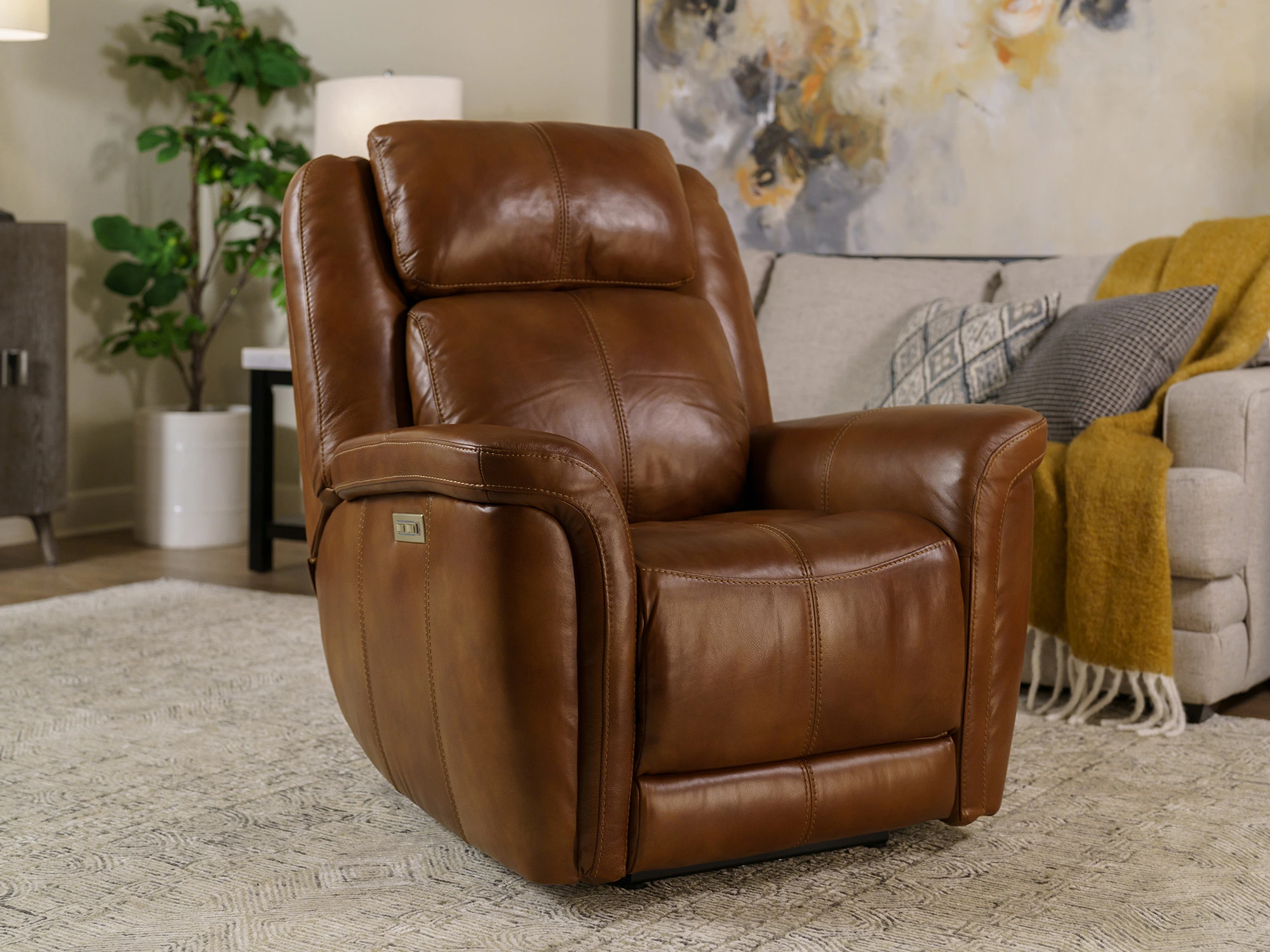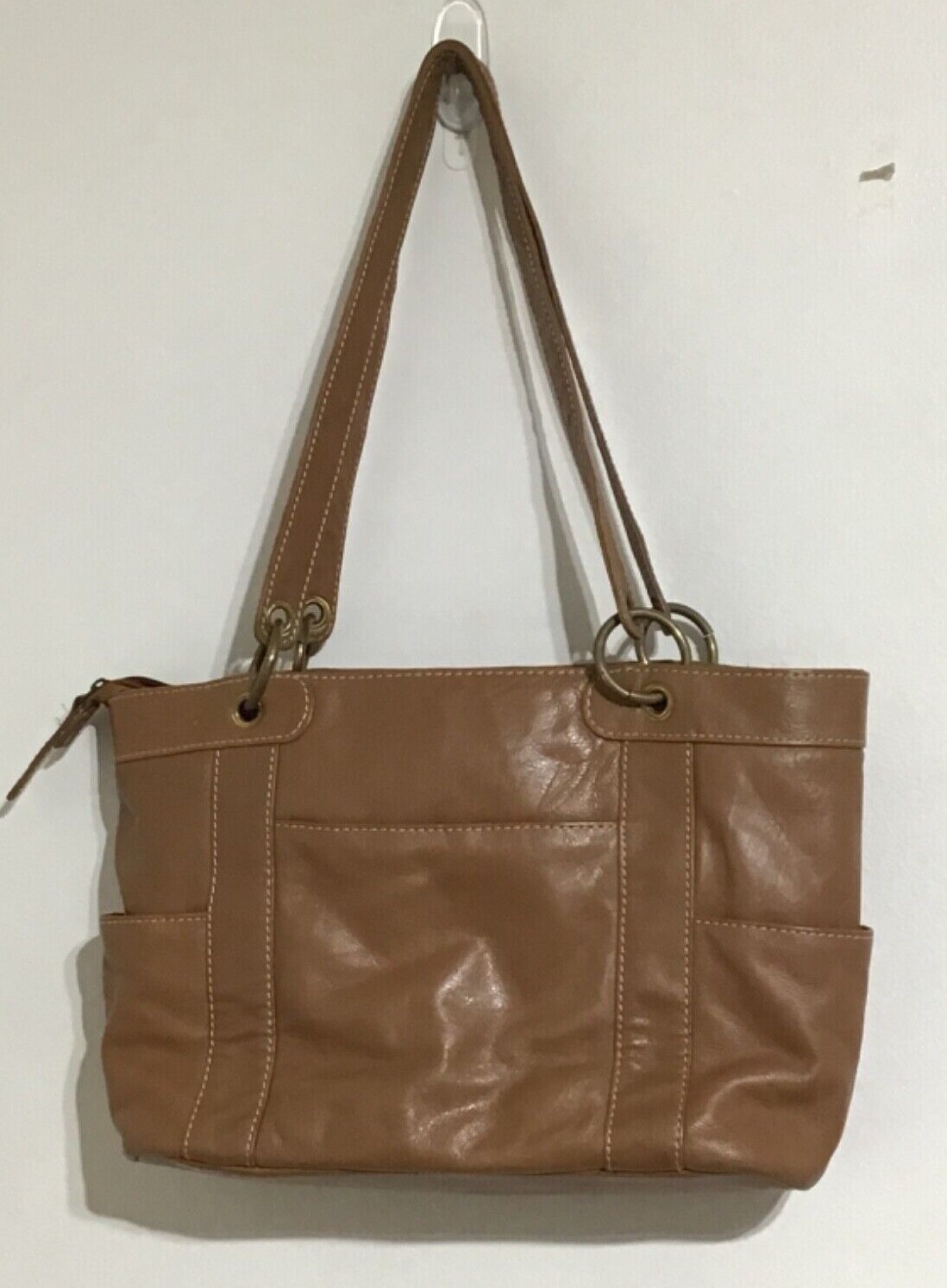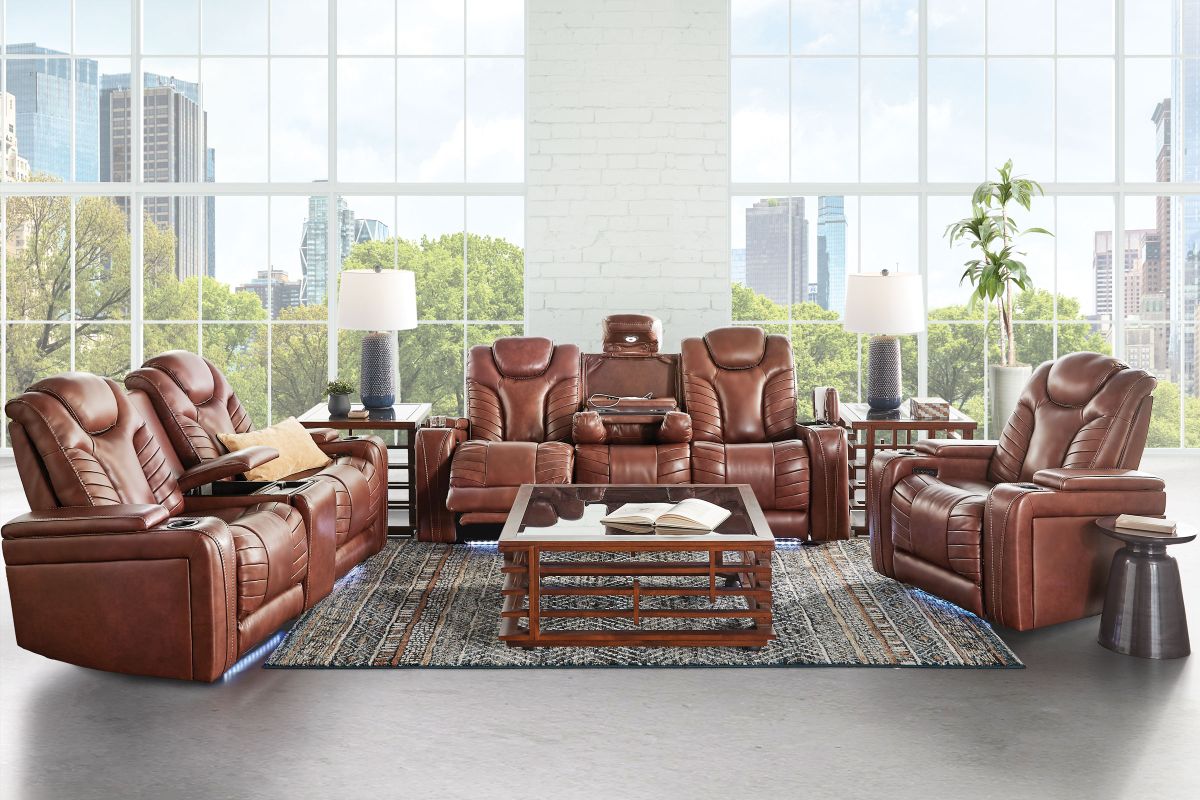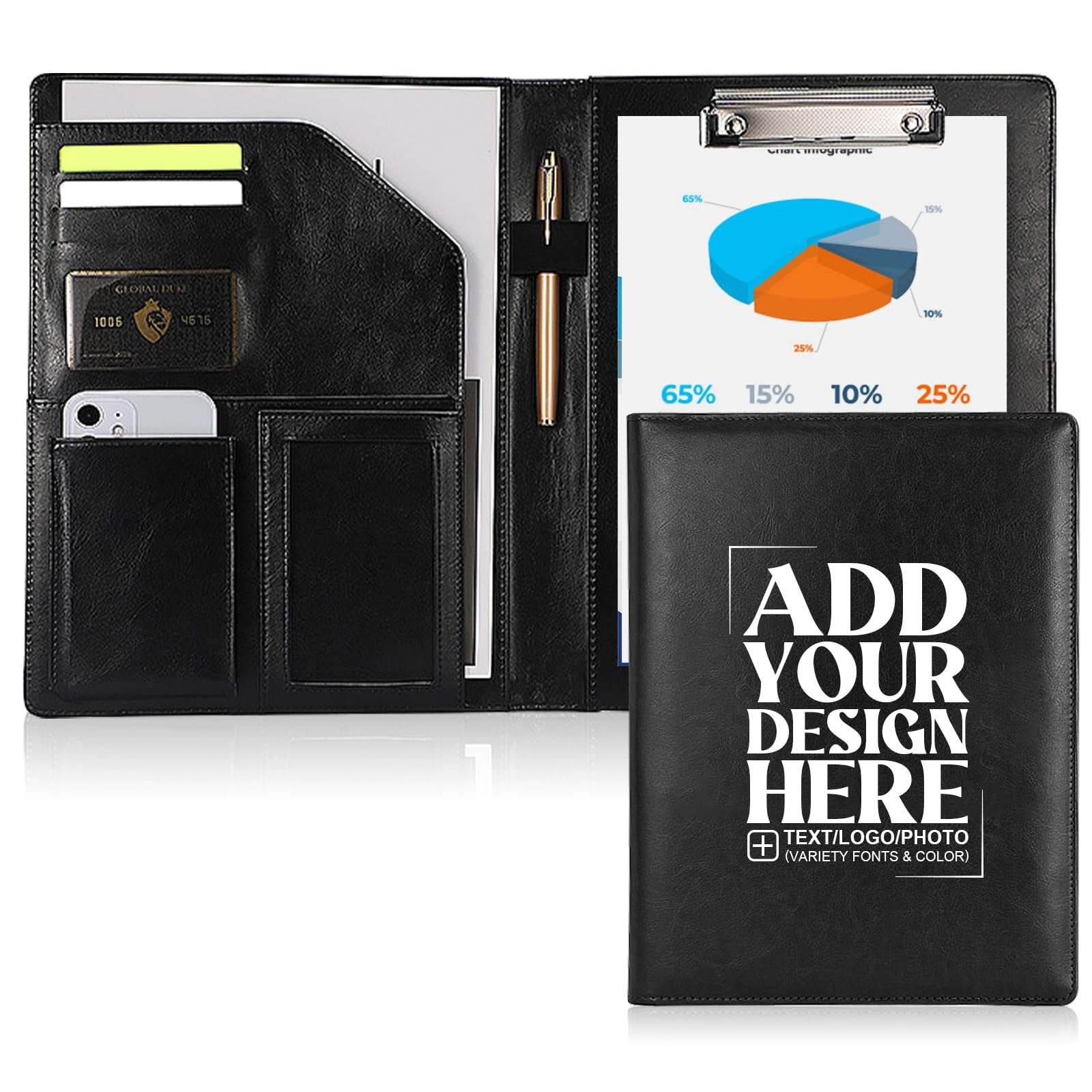Introduction: Navigating the Global Market for suede leather.
In the competitive landscape of fashion and upholstery, sourcing high-quality suede leather can pose significant challenges for international B2B buyers. This guide addresses the complexities of navigating the global market for suede leather, ensuring that businesses can confidently select the right materials for their products. From identifying various types of suede and their applications to understanding the nuances of supplier vetting and pricing, this comprehensive resource empowers decision-makers to make informed purchasing choices.
Suede leather, known for its soft texture and unique aesthetic appeal, is increasingly sought after for a wide range of products, including footwear, bags, and upholstery. Buyers must navigate a plethora of options, from Italian suede to local tanneries, each offering distinct qualities and price points. Furthermore, understanding the differences between suede and traditional leather can influence purchasing strategies, especially in regions like Africa, South America, the Middle East, and Europe, where market demands vary significantly.
This guide not only outlines the essential characteristics of suede leather but also provides actionable insights into supplier evaluation and cost considerations. By leveraging this information, businesses can enhance their procurement strategies, ensuring they select the finest materials that align with their brand values and customer expectations. Whether you are a small artisan or a large-scale manufacturer, this resource will serve as a vital tool in your quest for superior suede leather.
Table Of Contents
- Top 7 Suede Leather. Manufacturers & Suppliers List
- Introduction: Navigating the Global Market for suede leather.
- Understanding suede leather. Types and Variations
- Key Industrial Applications of suede leather.
- 3 Common User Pain Points for ‘suede leather.’ & Their Solutions
- Strategic Material Selection Guide for suede leather.
- In-depth Look: Manufacturing Processes and Quality Assurance for suede leather.
- Practical Sourcing Guide: A Step-by-Step Checklist for ‘suede leather.’
- Comprehensive Cost and Pricing Analysis for suede leather. Sourcing
- Alternatives Analysis: Comparing suede leather. With Other Solutions
- Essential Technical Properties and Trade Terminology for suede leather.
- Navigating Market Dynamics and Sourcing Trends in the suede leather. Sector
- Frequently Asked Questions (FAQs) for B2B Buyers of suede leather.
- Strategic Sourcing Conclusion and Outlook for suede leather.
- Important Disclaimer & Terms of Use
Understanding suede leather. Types and Variations
| Type Name | Key Distinguishing Features | Primary B2B Applications | Brief Pros & Cons for Buyers |
|---|---|---|---|
| Italian Suede | Soft, luxurious finish; dyed with aniline | High-end fashion, accessories | Pros: Premium quality, wide color range. Cons: Higher cost due to quality. |
| Goat Suede | Durable and textured; naturally water-resistant | Footwear, bags, upholstery | Pros: Stronger than other suedes, good for rugged use. Cons: Less soft feel than lamb or calf suede. |
| Lamb Suede | Very soft and supple; fine nap texture | Luxury apparel, high-fashion items | Pros: Exceptional softness, ideal for garments. Cons: Less durable, more prone to wear. |
| Cowhide Suede | Thicker, sturdy; offers a more rugged texture | Upholstery, workwear, outdoor gear | Pros: Durable and versatile, suitable for various applications. Cons: Heavier and less refined feel. |
| Nubuck | Sanded top layer, similar to suede but with a finer finish | High-end footwear, luxury bags | Pros: Soft, luxurious feel; more durable than traditional suede. Cons: Requires careful maintenance to avoid staining. |
What are the characteristics of Italian Suede, and how is it suitable for B2B applications?
Italian suede is renowned for its luxurious softness and rich color palette, thanks to the use of premium aniline dyes. This type of suede is commonly used in high-end fashion and accessories, appealing to brands that prioritize quality and aesthetics. When purchasing Italian suede, B2B buyers should consider the sourcing and tanning processes, as these directly impact the material’s quality and sustainability. While the price point may be higher, the investment often pays off in customer satisfaction and brand reputation.
How does Goat Suede compare to other types for B2B buyers?
Goat suede is celebrated for its durability and natural water resistance, making it a practical choice for a variety of applications, including footwear and bags. Its textured surface provides a unique aesthetic that appeals to buyers looking for rugged yet stylish options. B2B buyers should weigh the strength and versatility of goat suede against its slightly firmer texture, which may not suit all luxury applications. However, its resilience makes it an excellent choice for products requiring longevity.
Why is Lamb Suede favored for luxury items in B2B markets?
Lamb suede is characterized by its exceptional softness and fine nap, making it a preferred choice for luxury apparel and high-fashion items. Its supple nature allows for comfortable wear and an elegant drape, appealing to fashion-forward brands. When sourcing lamb suede, B2B buyers should consider its delicacy and potential for wear over time. While it offers a luxurious feel, it may not be suitable for products that require heavy-duty use, necessitating careful selection for specific applications.
What are the benefits and drawbacks of Cowhide Suede for B2B applications?
Cowhide suede is thicker and more robust than other types, providing a rugged texture that is ideal for upholstery and workwear. Its durability makes it suitable for outdoor gear and items that undergo frequent use. B2B buyers should consider the heavier weight and less refined finish of cowhide suede, which may not align with luxury branding. However, its versatility and strength offer compelling advantages for businesses seeking reliable materials for practical applications.
What makes Nubuck a unique option for B2B buyers?
Nubuck, often confused with suede, features a sanded top layer that gives it a finer finish and a luxurious feel. It is commonly used in high-end footwear and luxury bags, appealing to brands that want to convey quality and sophistication. B2B buyers should be aware of the maintenance requirements associated with nubuck, as it is more susceptible to staining compared to traditional suede. Nonetheless, its combination of softness and durability makes it a valuable choice for upscale products.
Key Industrial Applications of suede leather.
| Industry/Sector | Specific Application of suede leather | Value/Benefit for the Business | Key Sourcing Considerations for this Application |
|---|---|---|---|
| Fashion and Apparel | Suede garments, including jackets and shoes | Offers a soft, luxurious feel, enhancing brand appeal | Source high-quality, durable suede; consider color variety and finish options |
| Automotive | Upholstery for luxury vehicles | Enhances aesthetics and comfort, appealing to premium markets | Ensure compliance with automotive standards; assess durability and maintenance requirements |
| Furniture and Interior Design | Upholstered furniture and decorative items | Provides a soft texture and aesthetic appeal, attracting high-end customers | Focus on stain resistance and color fastness; verify sourcing from sustainable suppliers |
| Leather Goods Manufacturing | Bags, wallets, and accessories | Creates unique, stylish products that stand out in a competitive market | Look for consistent quality and availability; evaluate supplier reputation and lead times |
| Footwear | Casual and fashion-forward shoes | Combines comfort with style, appealing to diverse consumer bases | Prioritize sourcing for flexibility and breathability; consider the environmental impact of tanning processes |
How is Suede Leather Used in Fashion and Apparel?
In the fashion industry, suede leather is often utilized in the creation of garments such as jackets, skirts, and shoes. Its soft texture and luxurious appearance make it a favored choice for high-end fashion brands. For international B2B buyers, sourcing high-quality suede is essential, as it not only affects the product’s aesthetic but also its durability. Buyers must consider the range of colors and finishes available, ensuring they align with current fashion trends and consumer preferences.
What Role Does Suede Leather Play in the Automotive Sector?
Suede leather is frequently employed in the upholstery of luxury vehicles, where it adds a touch of sophistication and comfort. This material is particularly appealing to consumers seeking premium automotive experiences. For B2B buyers in this sector, it is critical to ensure that the suede meets automotive standards for durability and maintenance. Additionally, suppliers should be evaluated for their ability to provide consistent quality and a variety of colors to match different vehicle interiors.
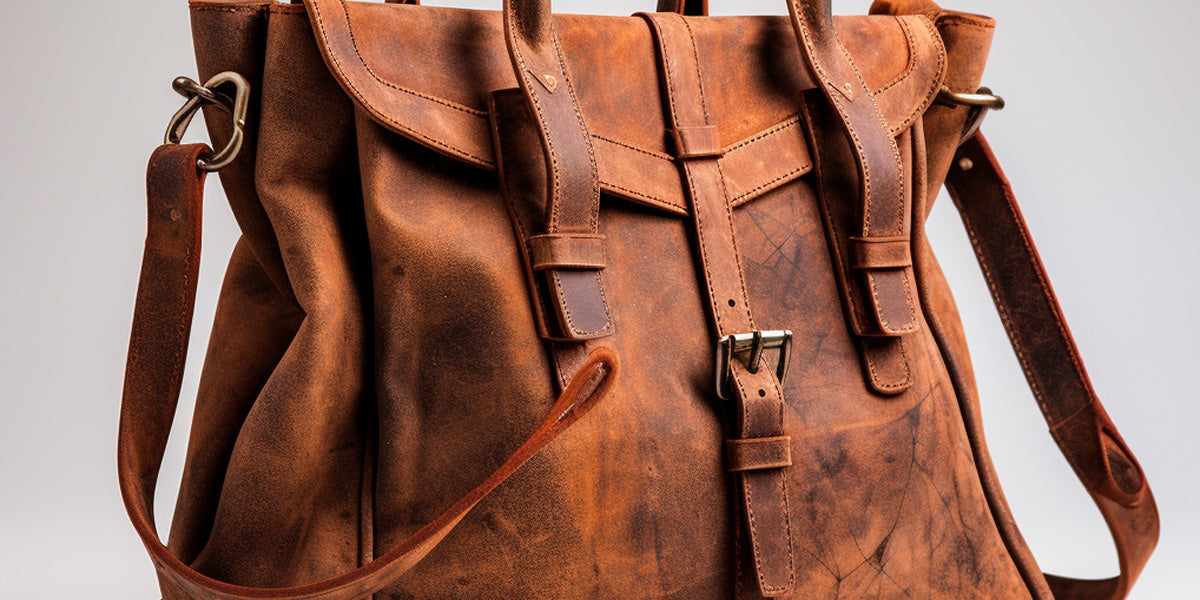
Illustrative image related to suede leather.
How is Suede Leather Used in Furniture and Interior Design?
In furniture and interior design, suede leather is used for upholstery on sofas, chairs, and decorative items, providing a soft touch that enhances the overall aesthetic of a space. Its appeal lies in its ability to create a warm and inviting atmosphere. B2B buyers must focus on sourcing suede that is not only visually appealing but also resistant to stains and wear, especially for high-traffic areas. Collaborating with suppliers who offer sustainable and ethically sourced materials can also add value to their product offerings.
What Applications Does Suede Leather Have in Leather Goods Manufacturing?
Suede leather is a popular choice for manufacturing bags, wallets, and other accessories due to its unique texture and style. This versatility allows brands to create distinctive products that cater to diverse consumer tastes. For international buyers, it’s vital to source suede that maintains consistent quality and is available in a variety of styles. Supplier reputation and lead times are also crucial considerations to ensure timely delivery and product availability.
How is Suede Leather Used in Footwear Production?
In the footwear industry, suede leather is favored for its combination of comfort and style, making it suitable for casual and fashion-forward shoes. Its breathability and flexibility enhance wearability, appealing to a broad range of consumers. B2B buyers should prioritize sourcing suede that meets flexibility and durability standards while also considering the environmental impact of the tanning process. Establishing relationships with reliable suppliers can ensure consistent quality and timely access to materials.
3 Common User Pain Points for ‘suede leather.’ & Their Solutions
Scenario 1: Sourcing Quality Suede Leather for Diverse Markets
The Problem: B2B buyers often struggle with sourcing high-quality suede leather that meets varying market demands. This challenge is particularly pronounced in regions like Africa and South America, where local suppliers may not have the same standards as established European tanneries. Buyers face difficulties in verifying the authenticity and quality of suede, which can lead to inconsistent product offerings and potential damage to their brand reputation.
The Solution: To overcome this sourcing challenge, B2B buyers should prioritize establishing relationships with reputable tanneries that provide transparency regarding their materials and processes. It is crucial to request samples from suppliers to assess the quality firsthand before placing larger orders. Engaging with suppliers that have a proven track record in the international market can also help mitigate risks associated with quality inconsistencies. Additionally, utilizing platforms that aggregate reviews and ratings for suppliers can guide buyers toward making informed decisions.
Scenario 2: Managing Suede Leather’s Unique Care Requirements
The Problem: Suede leather is renowned for its softness and texture, but it also requires specialized care to maintain its appearance and longevity. B2B buyers often find themselves dealing with customers who are unaware of proper maintenance practices, leading to a higher rate of returns and customer dissatisfaction. The lack of standardized care guidelines can create confusion and frustration for both buyers and end consumers.
The Solution: To address these care challenges, B2B buyers should invest in educational materials that clearly outline the do’s and don’ts of suede maintenance. Providing customers with care kits that include suede brushes, cleaning solutions, and protective sprays can enhance their experience and reduce product returns. Furthermore, incorporating care instructions into product packaging or as part of an online resource can empower customers to take better care of their suede products. Regular training sessions for sales staff about suede maintenance will also ensure they can effectively communicate care practices to consumers.
Scenario 3: Addressing Durability Concerns for High-Traffic Products
The Problem: Durability is a common concern when it comes to using suede leather in high-traffic applications, such as footwear or upholstery. B2B buyers may face pushback from clients who question the suitability of suede for products subjected to daily wear and tear. This concern can lead to hesitation in adopting suede, resulting in missed opportunities in markets that favor softer, more luxurious materials.
The Solution: To alleviate durability concerns, B2B buyers should focus on sourcing suede treated with advanced protective finishes that enhance its resistance to stains and wear. Buyers can seek out suppliers who offer suede with a higher density or those treated with water-repellent coatings. Additionally, providing case studies or testimonials from other businesses that successfully use suede in high-traffic environments can build confidence among potential clients. Offering a warranty or guarantee on suede products can also serve as a powerful reassurance, demonstrating a commitment to quality and customer satisfaction.
Strategic Material Selection Guide for suede leather.
What Are the Key Materials Used in Suede Leather Production?
Suede leather is derived from various animal hides, with each type offering distinct characteristics that influence its performance and suitability for different applications. Below, we analyze four common materials used in the production of suede leather, focusing on their properties, advantages, disadvantages, and considerations for international B2B buyers.
1. Cowhide Suede
Key Properties: Cowhide suede is known for its thickness and durability. It typically withstands moderate temperatures and pressures, making it suitable for various applications, including upholstery and fashion accessories.
Pros & Cons: The primary advantage of cowhide suede is its robust nature, which provides excellent wear resistance. However, it can be heavier and more expensive than other suede types, which may impact manufacturing costs and end-product pricing.
Impact on Application: Cowhide suede is ideal for products that require durability, such as bags and jackets. Its thickness can also provide better insulation, making it suitable for colder climates.
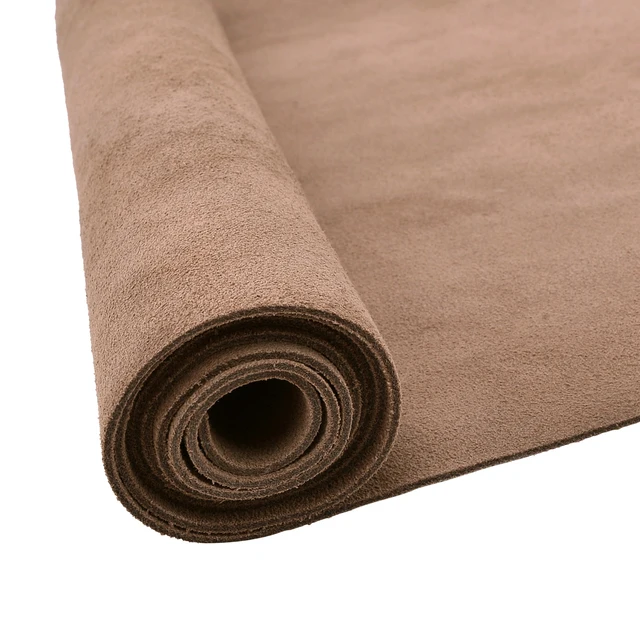
Illustrative image related to suede leather.
Considerations for International Buyers: Buyers from regions like Africa and the Middle East should be aware of local preferences for leather thickness and durability. Compliance with international standards such as ASTM and DIN for leather quality is crucial.
2. Lambskin Suede
Key Properties: Lambskin suede is lighter and softer than cowhide, offering a luxurious feel. It is less durable but provides excellent temperature regulation, making it comfortable for wear.
Pros & Cons: The softness of lambskin suede is a significant advantage for high-end fashion products, but its lower durability can be a limitation for items subjected to heavy use. Additionally, it tends to be more expensive due to its premium quality.

Illustrative image related to suede leather.
Impact on Application: Lambskin suede is often used in high-fashion garments and accessories, where aesthetics and comfort are prioritized over durability.
Considerations for International Buyers: European buyers may favor lambskin for luxury goods, while those in South America may seek it for fashion-forward designs. Understanding regional market trends is essential for successful procurement.
3. Goatskin Suede
Key Properties: Goatskin suede is known for its unique texture and flexibility. It offers a good balance between durability and softness, making it versatile for various applications.
Pros & Cons: The key advantage of goatskin suede is its resilience and ability to hold color well, which is beneficial for dyed products. However, it may not be as widely available as cowhide, potentially complicating sourcing.
Impact on Application: This material is suitable for a range of products, including footwear and bags, where a combination of durability and aesthetic appeal is desired.
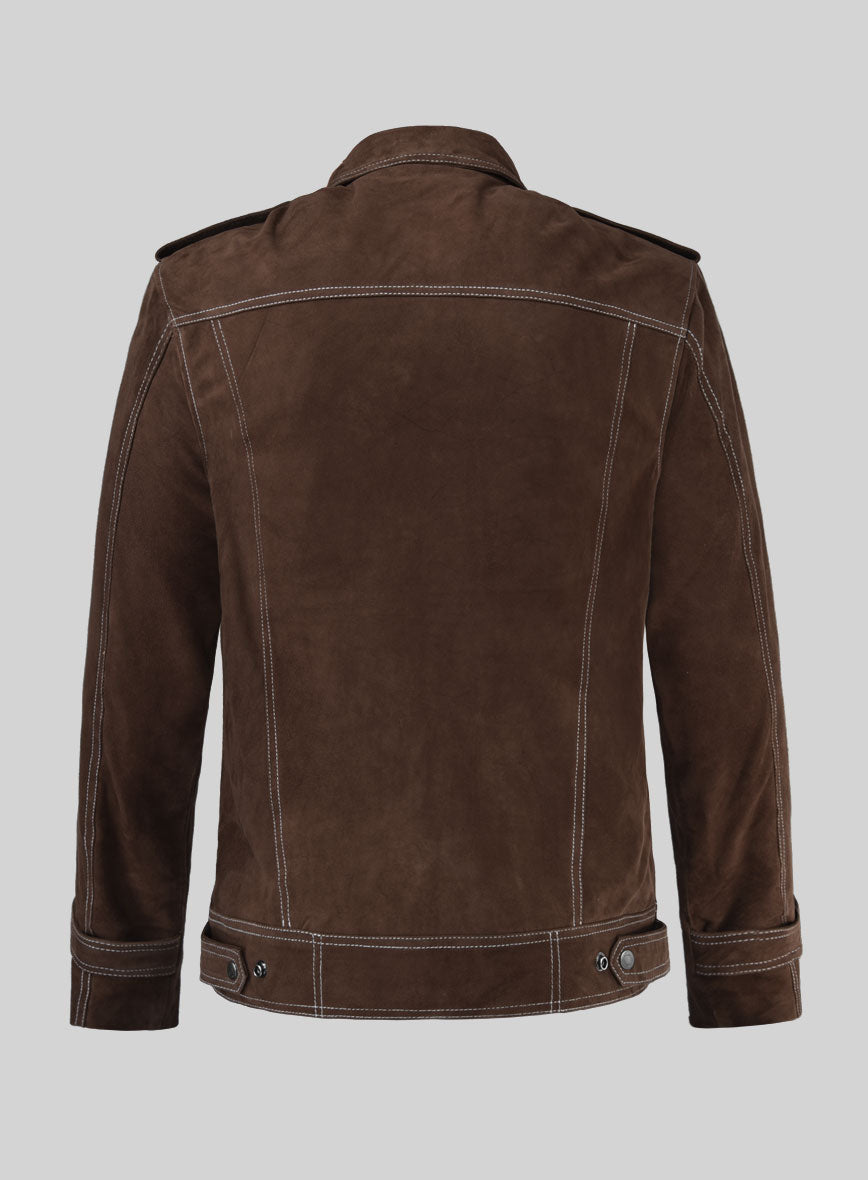
Illustrative image related to suede leather.
Considerations for International Buyers: Buyers should consider the availability of goatskin suede in their region, as it may not be as commonly stocked as cowhide. Compliance with local regulations regarding animal products is also important.
4. Pigskin Suede
Key Properties: Pigskin suede is characterized by its unique grain and texture. It is generally more resistant to stains and moisture than other types of suede, making it practical for various applications.
Pros & Cons: The primary advantage of pigskin suede is its affordability and stain resistance, making it a cost-effective choice for mass-produced items. However, it may not have the same luxurious feel as lambskin or cowhide.
Impact on Application: Pigskin is often used in more casual products, such as workwear and outdoor gear, where functionality is prioritized over luxury.
Considerations for International Buyers: Buyers in regions with stringent regulations on animal products, such as Europe, must ensure compliance with local laws. Additionally, understanding market preferences for material types is crucial for successful sales.
Summary Table of Suede Leather Materials
| Material | Typical Use Case for suede leather. | Key Advantage | Key Disadvantage/Limitation | Relative Cost (Low/Med/High) |
|---|---|---|---|---|
| Cowhide Suede | Bags, jackets, upholstery | Excellent durability | Heavier and more expensive | High |
| Lambskin Suede | High-fashion garments, accessories | Luxurious feel | Lower durability | High |
| Goatskin Suede | Footwear, bags | Good balance of durability and softness | Limited availability | Medium |
| Pigskin Suede | Workwear, outdoor gear | Stain and moisture resistance | Less luxurious feel | Low |
This guide provides essential insights for international B2B buyers looking to make informed decisions regarding suede leather materials, ensuring they select the best options for their specific applications and markets.
In-depth Look: Manufacturing Processes and Quality Assurance for suede leather.
What Are the Key Stages in the Manufacturing Process of Suede Leather?
The manufacturing process of suede leather involves several critical stages, each requiring meticulous attention to detail to ensure high-quality output. Understanding these stages is essential for B2B buyers looking to source suede leather for various applications, from fashion to upholstery.
Material Preparation: What Is Involved?
The process begins with the selection of raw hides, typically from animals such as cows, goats, or lambs. These hides must be free from defects and of suitable thickness. Once selected, the hides undergo a rigorous cleaning process to remove any impurities, dirt, or hair. This step is crucial as it sets the foundation for the quality of the suede.
Next, the hides are soaked in a tanning solution, which can be either vegetable or chrome-based. This step stabilizes the hides and prevents them from decomposing. During tanning, the choice of tanning agents significantly affects the final characteristics of the suede, such as softness, durability, and color retention.
How Is the Forming Process Conducted?
After tanning, the hides are split into layers. The inner layer, known as the flesh side, is then processed to create suede. This involves a careful sanding process that enhances the texture and creates the characteristic soft, velvety surface. The sanding must be uniform to ensure a consistent finish across the entire hide.
Following sanding, the suede is dyed using premium aniline dyes that penetrate deeply into the leather. This technique not only enhances the color but also preserves the natural texture of the suede. B2B buyers should inquire about the dyeing methods used, as they can impact the leather’s longevity and appearance.
What Techniques Are Used in the Finishing Stage?
The finishing stage is vital for enhancing both the aesthetic and functional properties of the suede. This includes additional sanding, buffing, and the application of protective coatings. These coatings may include water repellents or stain-resistant treatments, which are essential for maintaining the suede’s appearance and usability in various environments.
Quality control checkpoints are established throughout the manufacturing process to ensure that the suede meets the desired specifications. These checkpoints help to identify any defects early, allowing for corrective actions before the final product is completed.
How Is Quality Assurance Implemented in Suede Leather Production?
Quality assurance (QA) is a critical aspect of suede leather manufacturing, ensuring that the final product meets both industry standards and customer expectations. B2B buyers should be aware of the various quality assurance measures that reputable suppliers implement.
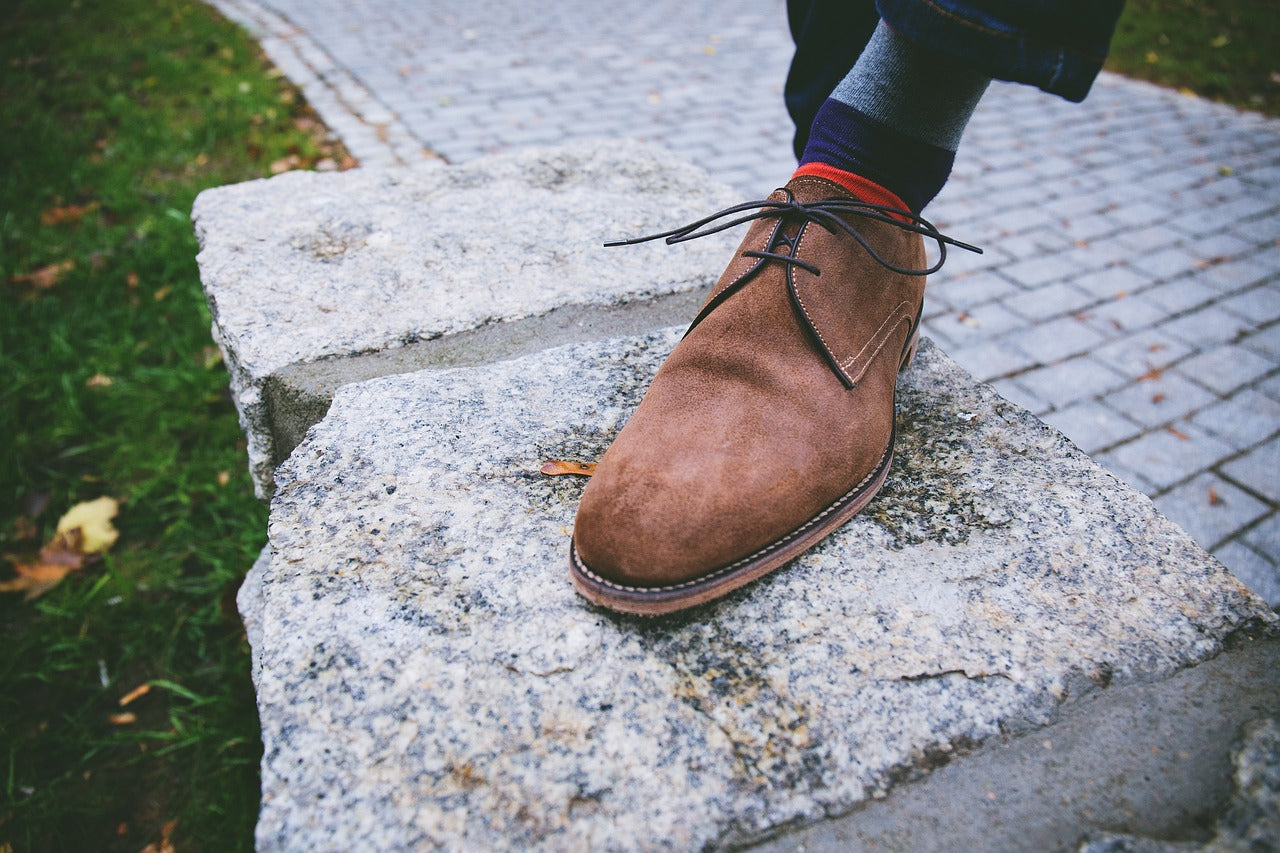
Illustrative image related to suede leather.
What International Standards Should Buyers Be Aware Of?
Many manufacturers adhere to international quality standards such as ISO 9001, which focuses on effective quality management systems. Compliance with such standards ensures that the manufacturer consistently produces high-quality suede leather. Additionally, industry-specific standards like CE marking and API certifications may be relevant, depending on the intended use of the suede leather.
What Are the Key QC Checkpoints in the Manufacturing Process?
Quality control typically involves three critical checkpoints:
-
Incoming Quality Control (IQC): This involves inspecting the raw hides upon arrival to ensure they meet the necessary quality criteria. Defective hides are rejected at this stage.
-
In-Process Quality Control (IPQC): During the tanning and finishing processes, regular inspections are conducted to monitor the quality of the suede. Any issues identified at this stage can be addressed before the final product is completed.
-
Final Quality Control (FQC): The finished suede undergoes a thorough inspection to check for consistency in texture, color, and overall quality. Any non-conforming products are either reworked or discarded.
How Can B2B Buyers Verify Supplier Quality Control?
For B2B buyers, verifying a supplier’s quality control processes is crucial. Here are several effective methods:
-
Supplier Audits: Conducting on-site audits allows buyers to assess the manufacturing processes, equipment, and quality control measures in place. This provides valuable insight into the supplier’s commitment to quality.
-
Quality Reports: Requesting detailed quality reports can help buyers understand the QC measures employed by the supplier. This includes data on defect rates, compliance with standards, and testing outcomes.
-
Third-Party Inspections: Engaging third-party inspection services can provide an unbiased evaluation of the supplier’s quality control processes. These inspections can be particularly beneficial for international buyers who may not have the resources for on-site audits.
What Common Testing Methods Are Used in Suede Leather Quality Control?
Testing methods play a crucial role in ensuring that suede leather meets the required standards for durability, appearance, and performance. Common testing methods include:
-
Abrasion Resistance Testing: This assesses how well the suede can withstand wear and tear, which is essential for items like footwear and upholstery.
-
Colorfastness Testing: This evaluates the dye stability under various conditions, such as exposure to light and moisture. Ensuring colorfastness is vital for maintaining the aesthetic appeal of suede products.
-
Water Resistance Testing: This determines the effectiveness of any protective coatings applied to the suede. Water-resistant suede is particularly valuable in regions with high humidity or rainfall.
What Nuances Should International B2B Buyers Consider?
International buyers, particularly those from Africa, South America, the Middle East, and Europe, should consider several nuances when sourcing suede leather:
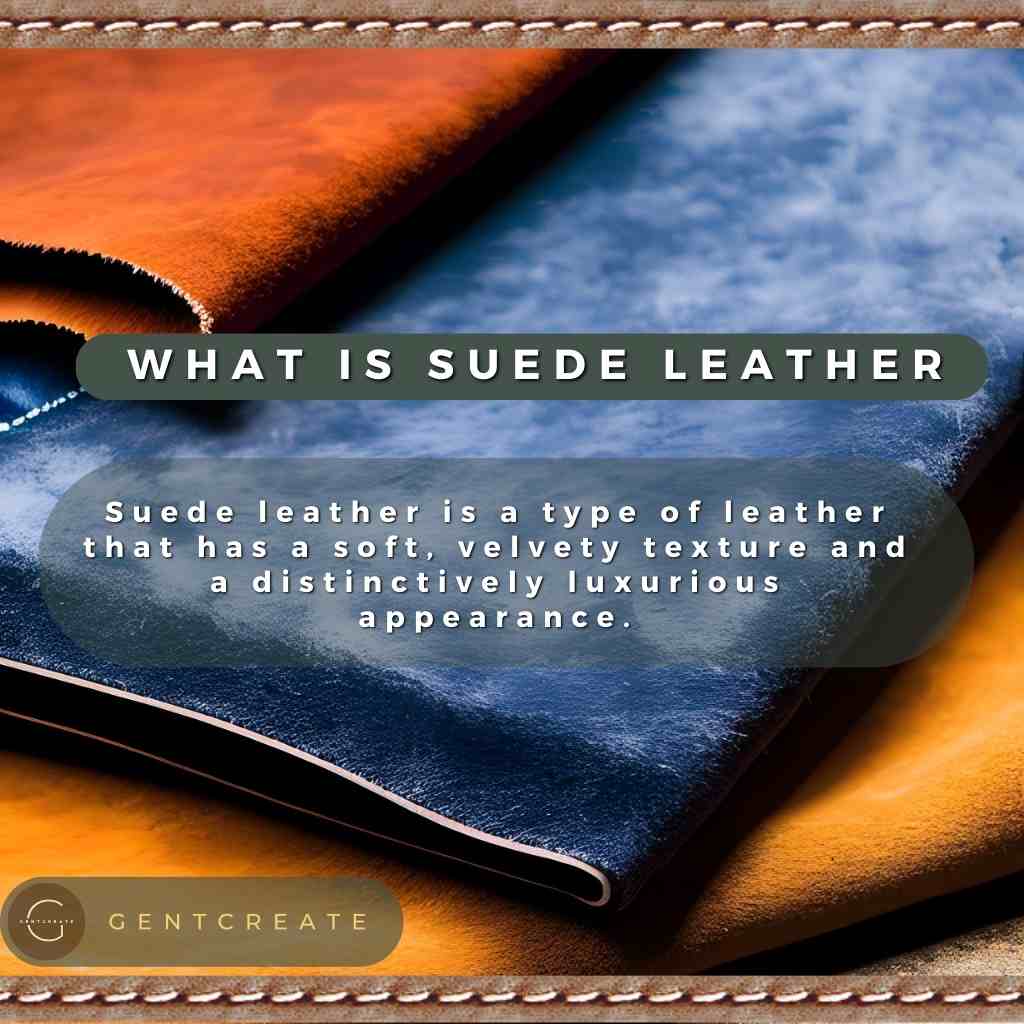
Illustrative image related to suede leather.
-
Cultural Preferences: Different regions may have distinct preferences regarding suede color, texture, and finish. Understanding these preferences can help buyers select products that resonate with their target markets.
-
Regulatory Compliance: Buyers should be aware of any regional regulations regarding leather sourcing and manufacturing. Compliance with local laws can impact the importation and sale of suede products.
-
Sustainability Practices: Increasingly, buyers are seeking suppliers who adhere to sustainable practices in leather production. This includes ethical sourcing of hides and environmentally friendly tanning processes.
By understanding the manufacturing processes and quality assurance measures involved in suede leather production, B2B buyers can make informed decisions that align with their business needs and market demands. This knowledge not only enhances product quality but also strengthens supplier relationships, ultimately driving business success.
Practical Sourcing Guide: A Step-by-Step Checklist for ‘suede leather.’
In the competitive landscape of leather sourcing, acquiring high-quality suede leather requires a systematic approach. This checklist will guide B2B buyers through the essential steps for sourcing suede leather effectively, ensuring that you make informed decisions and establish reliable supplier relationships.
Step 1: Define Your Technical Specifications
Understanding your specific needs is the foundation of successful procurement. Consider the intended use of the suede leather—whether for fashion items, upholstery, or accessories—and define the required thickness, texture, and color. Documenting these specifications will help you communicate clearly with suppliers and ensure they can meet your requirements.
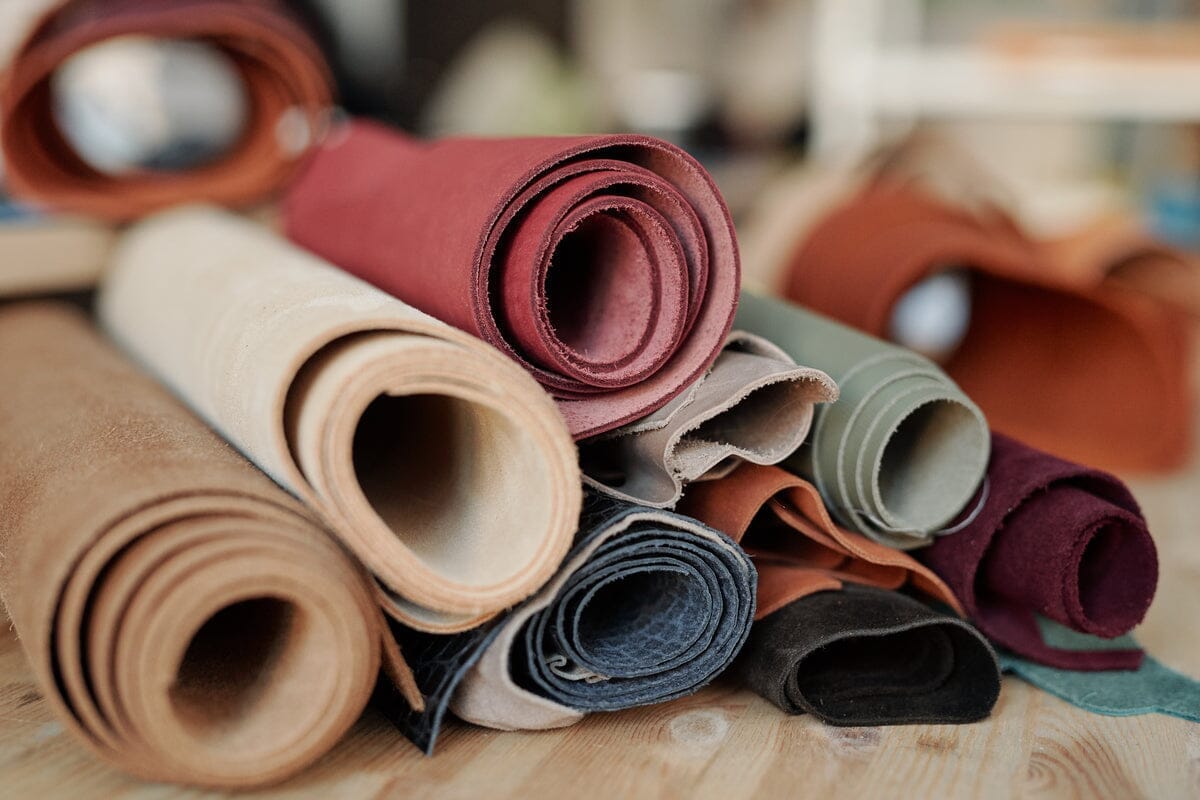
Illustrative image related to suede leather.
Step 2: Research and Identify Reputable Suppliers
Conduct thorough research to identify suppliers with a strong reputation in the suede leather market. Look for companies with established credentials, positive reviews, and experience in your target industry. Utilize online directories, trade shows, and industry publications to compile a list of potential suppliers.
- Tip: Focus on suppliers who specialize in suede leather, as they will have better quality control and sourcing practices.
Step 3: Evaluate Supplier Certifications and Compliance
Before finalizing your supplier, verify their certifications and compliance with industry standards. Ensure they adhere to environmental regulations, quality management systems, and ethical sourcing practices. Certifications like ISO 9001 or membership in industry associations can indicate a supplier’s commitment to quality.
- Important: Compliance with local regulations is particularly crucial when importing leather to different regions, such as Africa or Europe.
Step 4: Request Samples for Quality Assessment
Always request samples before placing a bulk order. This allows you to assess the quality, texture, and color of the suede leather firsthand. Evaluate the samples based on your technical specifications and ensure they meet your standards.
- Note: Pay attention to the finishing process, as it can affect the leather’s durability and appearance.
Step 5: Negotiate Terms and Conditions
Once you are satisfied with a supplier’s quality, engage in negotiations regarding pricing, payment terms, and delivery schedules. Discuss minimum order quantities and any potential for discounts on bulk purchases. Clear terms will help mitigate misunderstandings and ensure a smoother transaction.
- Tip: Be transparent about your budget constraints to foster a more collaborative negotiation process.
Step 6: Establish Communication Protocols
Effective communication is vital throughout the sourcing process. Establish clear lines of communication with your supplier, including preferred channels (email, phone, etc.) and response times. Regular updates regarding production and shipping will help you stay informed and address any issues promptly.
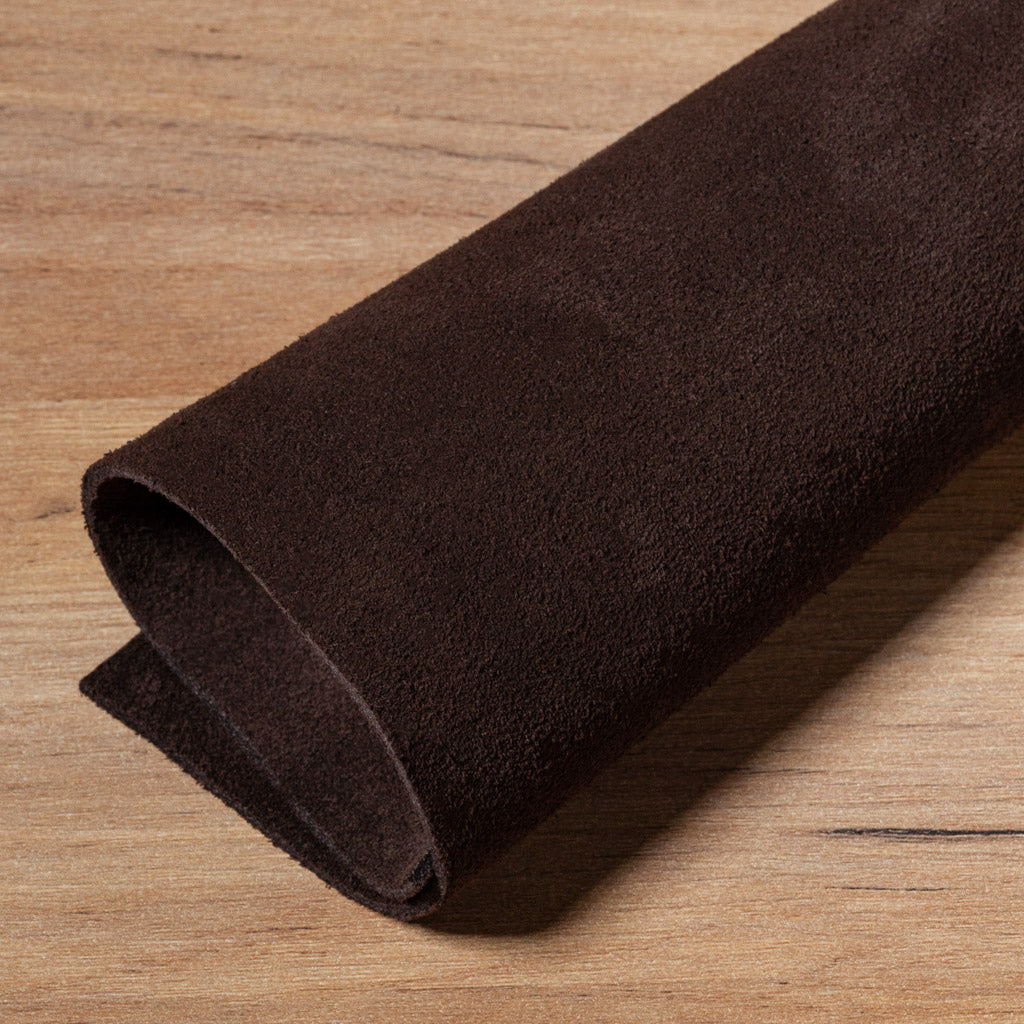
Illustrative image related to suede leather.
- Recommendation: Schedule periodic check-ins, especially for long-term contracts, to maintain a strong relationship.
Step 7: Monitor Supplier Performance Post-Purchase
After the transaction, monitor the supplier’s performance to ensure they meet the agreed-upon standards. Assess quality consistency, delivery timelines, and customer service responsiveness. This evaluation will help you determine if the supplier should be part of your long-term sourcing strategy.
- Key Insight: Building a strong relationship with suppliers can lead to better pricing and priority service in future orders.
By following this step-by-step checklist, B2B buyers can streamline their sourcing process for suede leather, ensuring high quality and dependable partnerships that meet their business needs.
Comprehensive Cost and Pricing Analysis for suede leather. Sourcing
What Are the Key Cost Components in Sourcing Suede Leather?
When sourcing suede leather, understanding the cost structure is crucial for B2B buyers. The primary cost components include:
-
Materials: The quality of the raw hides significantly influences the overall cost. Premium suede, often sourced from reputable tanneries in Italy or France, commands higher prices due to superior quality and specific tanning processes. Prices can range from $10 to $30 per square foot depending on the source and quality.
-
Labor: Labor costs vary by region, particularly between developed and developing countries. Regions with skilled labor, such as Italy, may incur higher labor costs compared to countries in Africa or South America where labor is more affordable.
-
Manufacturing Overhead: This includes costs associated with factory operations, such as utilities, maintenance, and administrative expenses. Efficient manufacturing practices can reduce overhead, impacting the final price.
-
Tooling: The initial setup for production, including specialized tools and machinery for cutting and finishing suede, can be a significant investment. Custom tooling for unique designs can add to the upfront costs.
-
Quality Control (QC): Ensuring the suede meets quality standards is essential, especially for international buyers. Rigorous QC processes can increase labor and overhead costs but are necessary to maintain product integrity.
-
Logistics: Shipping costs, including freight and insurance, can vary dramatically based on distance, mode of transport, and Incoterms. Buyers should consider these costs as part of the total purchase price.
-
Margin: Suppliers typically build in a margin to cover their risks and profit expectations. This can range from 15% to 30%, depending on market conditions and competition.
How Do Price Influencers Affect Suede Leather Sourcing?
Several factors can influence the pricing of suede leather in the B2B marketplace:
-
Volume and Minimum Order Quantity (MOQ): Bulk orders often lead to discounted rates. Suppliers may offer tiered pricing based on the quantity ordered, making it essential for buyers to assess their needs accurately.
-
Specifications and Customization: Custom colors, finishes, or treatments can increase costs. Buyers should clearly communicate their specifications to avoid unexpected charges.
-
Material Quality and Certifications: Higher-quality materials and certifications (such as eco-friendly tanning processes) can raise prices. Buyers seeking sustainable options may find a premium associated with these products.
-
Supplier Factors: The reputation and reliability of the supplier play a crucial role in pricing. Established suppliers with proven track records may charge more, but they often deliver higher quality and better service.
-
Incoterms: The chosen Incoterms can significantly affect the final cost. For instance, terms like FOB (Free on Board) place shipping responsibilities on the buyer, impacting logistics costs.
What Are the Best Buyer Tips for Negotiating Suede Leather Prices?
For international B2B buyers, particularly from Africa, South America, the Middle East, and Europe, understanding pricing nuances can lead to better deals:
-
Effective Negotiation: Always negotiate prices, especially when placing bulk orders. Leverage your purchasing power to secure more favorable terms.
-
Focus on Cost-Efficiency: Evaluate not just the price per square foot but the total cost of ownership, which includes shipping, duties, and potential wastage during production.
-
Understand Pricing Nuances: Stay informed about market trends, such as fluctuations in raw hide prices and labor costs in different regions, to make informed purchasing decisions.
-
Build Long-Term Relationships: Establishing a solid relationship with suppliers can lead to better pricing and priority service, especially during peak seasons.
-
Explore Multiple Suppliers: Don’t settle for the first quote. Comparing multiple suppliers can reveal significant price differences and lead to better negotiation leverage.
Disclaimer on Indicative Prices
The prices mentioned are indicative and can fluctuate based on market conditions, availability, and specific buyer requirements. It is advisable for buyers to conduct thorough market research and communicate directly with suppliers for accurate pricing tailored to their needs.
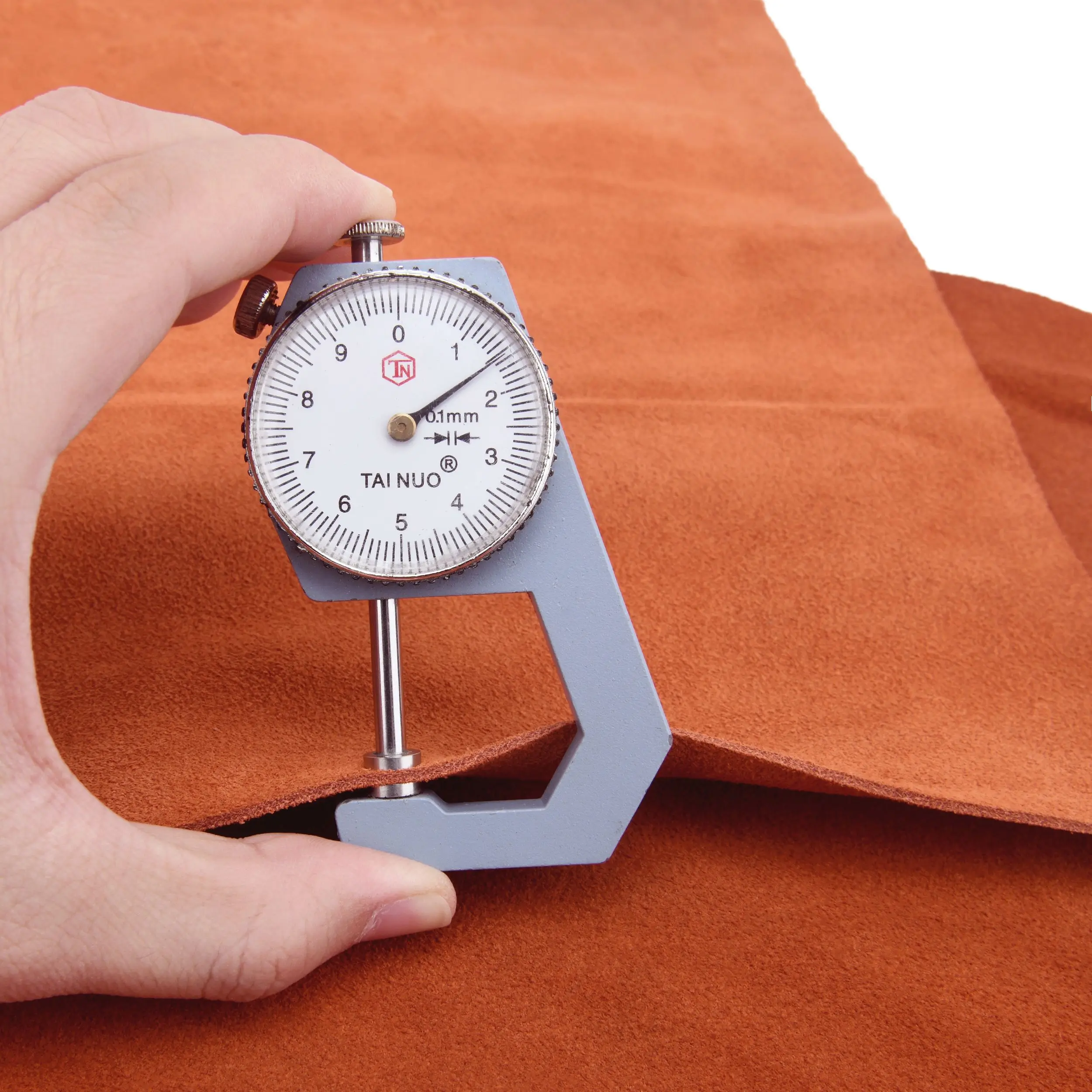
Illustrative image related to suede leather.
Alternatives Analysis: Comparing suede leather. With Other Solutions
Exploring Alternatives to Suede Leather for B2B Buyers
When evaluating materials for products such as bags, jackets, and upholstery, suede leather stands out for its unique texture and aesthetic appeal. However, various alternatives offer different characteristics that may align better with specific business needs, especially in diverse markets such as Africa, South America, the Middle East, and Europe. This analysis compares suede leather with two notable alternatives: synthetic leather and full-grain leather, examining their performance, cost, ease of implementation, maintenance, and best use cases.
| Comparison Aspect | Suede Leather | Synthetic Leather | Full-Grain Leather |
|---|---|---|---|
| Performance | Soft, textured, less durable | Good durability, can mimic suede | Highly durable, ages beautifully |
| Cost | Moderate to high | Generally lower cost | Higher price point |
| Ease of Implementation | Requires skilled craftsmanship | Easy to manufacture and handle | Requires skilled craftsmanship |
| Maintenance | Needs special care, prone to stains | Easy to clean, stain-resistant | Requires regular conditioning |
| Best Use Case | Casual wear, luxury items | Affordable fashion items, upholstery | Premium products, long-lasting goods |
What Are the Pros and Cons of Synthetic Leather as an Alternative to Suede?
Synthetic leather, often made from polyurethane (PU) or polyvinyl chloride (PVC), presents a cost-effective option that mimics the appearance of suede. Its durability is generally superior to that of suede, making it less susceptible to wear and tear. Additionally, synthetic leather is easy to clean and maintain, appealing to businesses targeting budget-conscious consumers. However, it lacks the natural texture and breathability of suede, potentially leading to a less luxurious feel. For businesses looking to offer a more affordable product without compromising too much on aesthetics, synthetic leather could be a viable alternative.
How Does Full-Grain Leather Compare to Suede Leather?
Full-grain leather, made from the top layer of the hide, is renowned for its durability and ability to develop a rich patina over time. This material is ideal for high-end products that demand longevity and a sophisticated appearance. While full-grain leather typically comes at a higher price point than suede, it offers superior resistance to wear and tear, making it a worthy investment for businesses targeting premium markets. The primary drawback is that full-grain leather may require more maintenance to keep it looking its best, and its weight can be a consideration for certain applications. Companies focused on luxury markets may find full-grain leather aligns perfectly with their brand ethos.
How Can B2B Buyers Choose the Right Material for Their Needs?
Selecting the right material hinges on understanding the specific requirements of your target market. For casual, stylish products aimed at younger consumers, suede leather may be ideal. Conversely, if cost-effectiveness and ease of maintenance are priorities, synthetic leather could be the better choice. For businesses emphasizing quality and durability in high-end markets, full-grain leather stands out as the optimal option. Evaluating these factors will help B2B buyers make informed decisions that align with their product offerings and customer expectations.
Essential Technical Properties and Trade Terminology for suede leather.
What Are the Key Technical Properties of Suede Leather?
When engaging with suede leather, understanding its technical properties is crucial for making informed purchasing decisions. Here are the essential specifications that B2B buyers should consider:
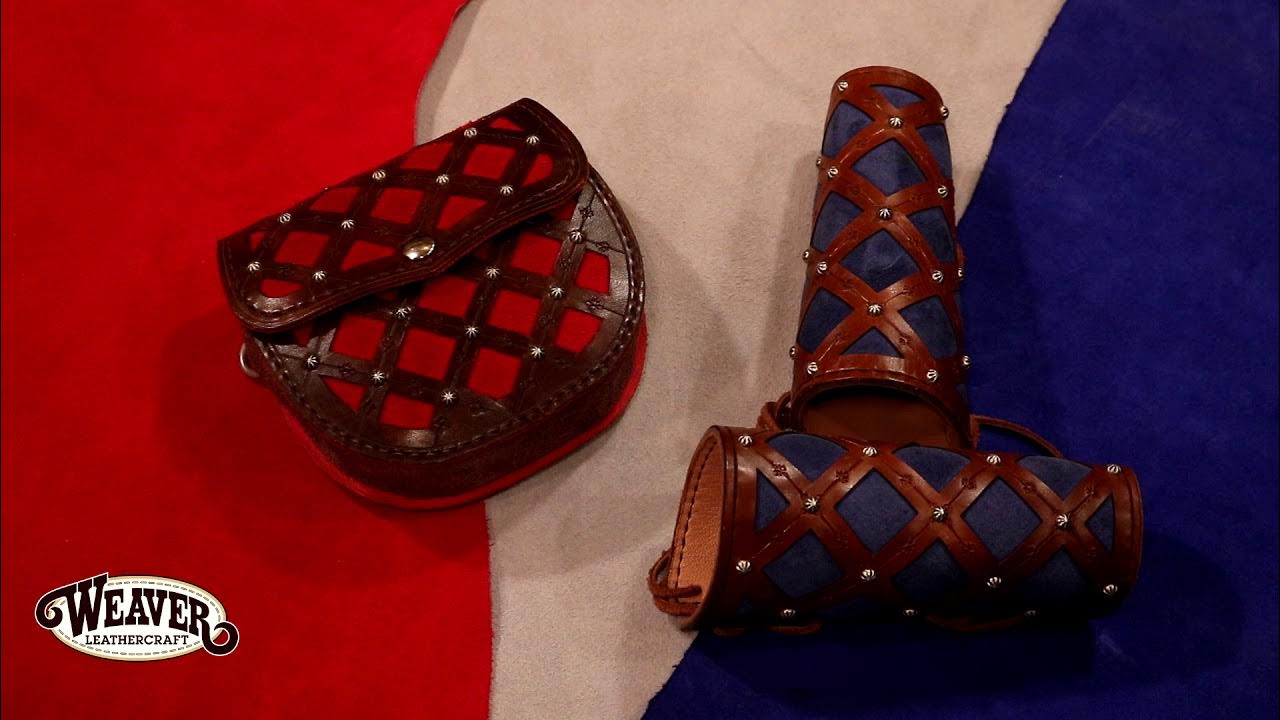
Illustrative image related to suede leather.
1. Material Grade
Material grade refers to the quality classification of suede leather, often determined by the source animal and processing methods. Suede can be derived from various hides, including cow, goat, and lamb. Higher grades, such as full-grain suede, maintain more natural characteristics and durability, which is particularly important for high-end products. For buyers, selecting the appropriate grade ensures product longevity and aligns with market expectations.
2. Thickness and Tolerance
Thickness is a vital specification, typically measured in millimeters (mm) or ounces (oz). Suede usually ranges from 0.6 mm to 1.2 mm in thickness. Tolerance indicates the acceptable variance in thickness during production. This specification is critical for manufacturers who require consistent material for crafting products. An understanding of thickness and tolerance can help buyers avoid issues related to product quality and performance.
3. Finish Type
The finish type of suede affects its appearance and tactile qualities. Common finishes include brushed, sanded, or oiled. Each finish type has its own aesthetic and functional properties, influencing how the suede interacts with moisture, stains, and wear. B2B buyers must consider finish types when sourcing suede for specific applications, as this can impact both product performance and customer satisfaction.
4. Color Fastness
Color fastness refers to the ability of the suede to retain its color when exposed to light, washing, or abrasion. It is measured through standardized tests and is crucial for products that will experience regular wear or environmental exposure. For B2B buyers, ensuring high color fastness helps maintain brand integrity and reduces returns due to color fading.
5. Water Resistance
While suede is generally not water-resistant, certain treatments can enhance its ability to repel moisture. Understanding the water resistance properties of suede is essential for buyers in climates prone to rain or humidity. Sourcing treated suede can prevent damage and prolong the lifespan of finished products.
What Are Common Trade Terms Related to Suede Leather?
Familiarity with industry terminology is vital for effective communication and negotiation in the suede leather market. Here are some commonly used trade terms:
1. OEM (Original Equipment Manufacturer)
OEM refers to companies that produce products based on the designs and specifications provided by another company. In the context of suede leather, OEM partnerships can facilitate the creation of custom products tailored to specific market needs. Understanding OEM relationships can help buyers negotiate better terms and ensure product alignment with brand standards.
2. MOQ (Minimum Order Quantity)
MOQ denotes the smallest quantity of a product that a supplier is willing to sell. This term is crucial for B2B buyers as it affects inventory management and cash flow. Knowing the MOQ helps buyers determine their purchasing strategy and ensure they meet supplier requirements while maximizing inventory efficiency.
3. RFQ (Request for Quotation)
An RFQ is a formal request sent to suppliers to obtain pricing and terms for specific products or services. For suede leather purchases, issuing an RFQ allows buyers to compare offers from multiple suppliers, ensuring they secure the best price and terms. This process is essential for strategic sourcing and cost management.
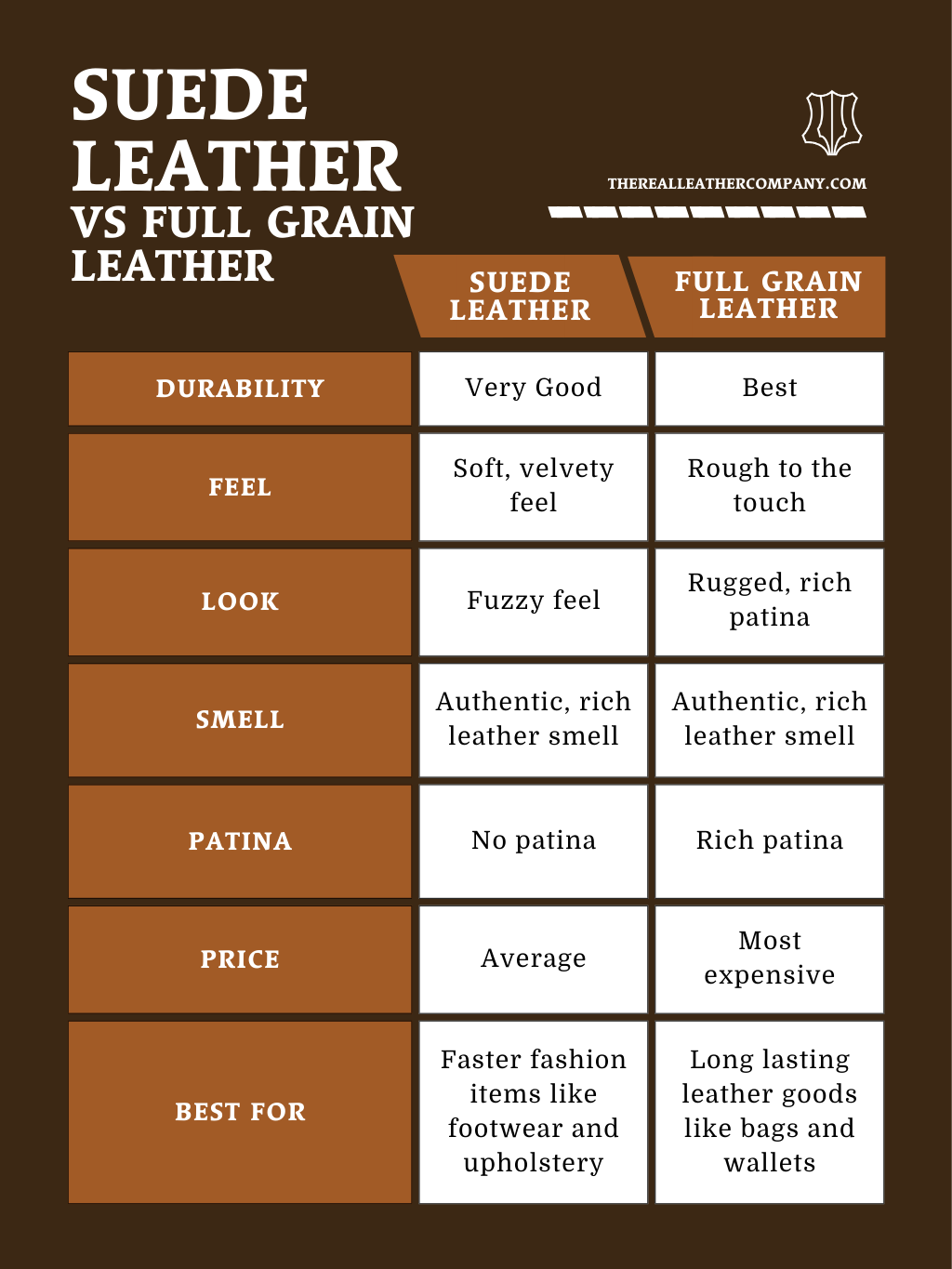
Illustrative image related to suede leather.
4. Incoterms (International Commercial Terms)
Incoterms are standardized shipping and logistics terms that define the responsibilities of buyers and sellers in international transactions. Understanding Incoterms is crucial for B2B buyers in the suede leather market, as they dictate who is responsible for shipping, insurance, and tariffs. Clarity on these terms helps prevent disputes and ensures smooth international transactions.
5. Tannery
A tannery is a facility that processes animal hides into leather, including suede. Knowing reputable tanneries can assist buyers in sourcing high-quality suede. Establishing relationships with tanneries can also provide insights into material availability, pricing, and production timelines.
By grasping these technical properties and trade terms, B2B buyers can navigate the suede leather market more effectively, ensuring they make informed purchasing decisions that align with their business objectives.
Navigating Market Dynamics and Sourcing Trends in the suede leather. Sector
What Are the Current Market Dynamics and Sourcing Trends in the Suede Leather Sector?
The global suede leather market is experiencing a notable transformation driven by several factors. The rise in demand for high-quality, luxurious products in fashion, automotive, and upholstery sectors is propelling the growth of suede leather. International B2B buyers, particularly from regions like Africa, South America, the Middle East, and Europe, are increasingly seeking unique textures and finishes that suede offers, which makes it a desirable option for premium product lines. Additionally, the integration of technology in sourcing processes, such as online platforms for inventory management and procurement, is streamlining operations and enhancing buyer-supplier relationships.
Emerging trends highlight a shift towards customization and personalization in suede leather products. Buyers are increasingly looking for suppliers who can offer tailored solutions, from specific colors and textures to unique sizes and finishes. Moreover, the rise of e-commerce platforms is enabling buyers to access global suppliers with ease, thereby expanding their sourcing options. As environmental concerns continue to influence purchasing decisions, suppliers who can demonstrate innovation in sustainable practices will likely capture more market share.
How Is Sustainability Influencing the Sourcing of Suede Leather?
Sustainability is becoming a cornerstone of sourcing strategies in the suede leather sector. The environmental impact of leather production, particularly in terms of water usage and chemical waste, is prompting B2B buyers to prioritize ethical sourcing. Suppliers that adhere to sustainable practices, such as using eco-friendly tanning processes and sourcing hides from responsible farms, are increasingly favored in the marketplace.
Moreover, certifications such as the Global Organic Textile Standard (GOTS) and the Leather Working Group (LWG) are gaining traction among buyers who are looking for assurance in their supply chains. These certifications not only enhance product credibility but also appeal to consumers who are becoming more conscious about the origins of their purchases. Buyers from Africa, South America, and the Middle East are particularly interested in aligning their brands with sustainable practices, which can enhance their market positioning and consumer appeal.
What Is the Historical Context of Suede Leather in B2B Markets?
The history of suede leather dates back centuries, with origins in the use of animal hides for practical applications. Traditionally, suede was valued for its soft texture and durability, making it a popular choice for garments, accessories, and upholstery. The process of creating suede involves a unique tanning technique that preserves the inner layer of the hide, resulting in the characteristic nap that differentiates it from other leather types.
In the modern B2B landscape, suede has evolved from a utilitarian material to a symbol of luxury and craftsmanship. This transformation is evident in its widespread use among high-end fashion brands and luxury automotive manufacturers, where it is often employed to create distinctive interiors and stylish apparel. As global trade continues to expand, the accessibility and versatility of suede leather make it a compelling choice for international buyers looking to enhance their product offerings.
Frequently Asked Questions (FAQs) for B2B Buyers of suede leather.
-
How do I assess the quality of suede leather when sourcing?
To evaluate the quality of suede leather, consider factors like the origin of the hide, tanning methods, and the finishing process. High-quality suede typically comes from reputable tanneries that use premium aniline dyes, ensuring rich color saturation and durability. Request samples to inspect the texture, softness, and consistency. Additionally, verify if the suede is single-sided or double-sided, as this affects its usability for various applications. Look for certifications or quality assurance documents from suppliers to ensure compliance with international standards. -
What is the best type of suede leather for making bags?
For bag production, the best type of suede leather is typically a medium to soft grade that balances durability and aesthetics. Suede sourced from lambskin or calfskin is often favored for its luxurious feel and lightweight nature, making it ideal for slouchy or casual designs. Ensure that the suede has been treated for water resistance if the bags are intended for outdoor use. It is also essential to consider the intended use and style of the bag, as this will influence the type and weight of suede required. -
What are the minimum order quantities (MOQs) for suede leather?
Minimum order quantities for suede leather can vary significantly depending on the supplier and the specific type of suede being ordered. Typically, MOQs can range from 10 to 100 hides or square meters. When negotiating with suppliers, inquire about flexibility in MOQs, especially if you are a smaller business. Some suppliers may offer reduced MOQs for first-time buyers or for specific colors or finishes, so it’s worth discussing your needs directly with them. -
How can I customize my suede leather order?
Customization options for suede leather orders often include color selection, thickness, and texture finishes. Many suppliers allow you to choose from a wide palette of colors, and some may offer dyeing services to match specific shades. Additionally, inquire about embossing or printing capabilities if branding is a consideration. Be sure to communicate your requirements clearly and request samples of customized options to ensure they meet your expectations before placing a larger order. -
What payment terms should I expect when sourcing suede leather?
Payment terms for suede leather can vary by supplier and region. Common terms include a deposit (usually 30-50%) upon order confirmation, with the balance due before shipment. Some suppliers may offer net payment terms (e.g., net 30 or net 60) depending on your business relationship and creditworthiness. Always clarify payment methods accepted, such as wire transfer, credit card, or letters of credit, and ensure that you have a clear invoice detailing all costs involved. -
How do I ensure compliance with international trade regulations when importing suede leather?
To ensure compliance with international trade regulations, familiarize yourself with the import laws of your country regarding leather goods. This includes understanding tariffs, import duties, and any specific regulations related to animal products. Work with suppliers who provide necessary documentation, such as certificates of origin and compliance with international standards. Consulting with a customs broker can also help navigate the complexities of international shipping and ensure that all paperwork is in order. -
What logistics considerations should I keep in mind when importing suede leather?
When importing suede leather, consider shipping methods, lead times, and potential customs delays. Air freight is faster but more expensive than sea freight, so evaluate your budget and urgency. Confirm that your supplier can provide the necessary export documentation, including packing lists and bills of lading. Additionally, keep an eye on seasonal factors that may affect shipping schedules and plan accordingly to avoid delays in your supply chain. -
How can I vet suppliers of suede leather effectively?
To vet suppliers of suede leather, conduct thorough research on their reputation and reliability. Look for reviews and testimonials from previous clients, and check for industry certifications that indicate quality standards. Request references and reach out to other businesses that have sourced from them. Additionally, consider visiting the supplier’s facility if possible, or request a video tour, to assess their production processes and quality control measures. This due diligence can help mitigate risks in your sourcing strategy.
Top 7 Suede Leather. Manufacturers & Suppliers List
1. Leather Hide Store – Suede Leather
Domain: leatherhidestore.com
Registered: 2010 (15 years)
Introduction: Suede leather is made from the bottom layer of cow hide, tanned with premium aniline dyes that penetrate the entire leather. It is silky soft, single-sided, and finished through a fine sanding process for a velvety touch. Ideal for various applications such as shoes, handbags, luggage, and furniture. Available in multiple colors and sizes. Care includes using a suede protectant and spot cleaning w…
2. Buffalo Jackson – Suede vs Leather: Key Differences
Domain: buffalojackson.com
Registered: 2011 (14 years)
Introduction: Suede vs Leather: Key Differences and Qualities
1. Texture:
– Suede: Soft, textured surface with a noticeable nap (raised, fuzzy texture).
– Leather: Smoother texture from the outer side of the hide.
2. Appearance:
– Suede: Matte finish, no shine.
– Leather: Smooth, polished surface with a sheen or glossy appearance.
3. Hand Feel:
– Suede: Soft and fuzzy hand feel due to the…
3. Noble Shoe – Suede Footwear
Domain: thenobleshoe.com
Registered: 2019 (6 years)
Introduction: Suede is a type of leather known for its durability and comfort. It is easy to wear and maintain, making it a popular choice for footwear. Suede shoes offer a stylish look while providing flexibility and breathability.
4. MasterClass – Suede Leather Essentials
Domain: masterclass.com
Registered: 1995 (30 years)
Introduction: Suede is a high-quality form of leather made from the underside of animal hides, characterized by a soft smooth surface. It is commonly made from lambskin, but can also be produced from goats, pigs, calves, and deer. Suede is softer, thinner, and not as strong as full-grain leather. There are different types of suede, including sheepskin suede (softest and lightest), cowhide suede (roughest and th…
5. Tandy Leather – Suede Leather Solutions
Domain: tandyleather.com
Registered: 1996 (29 years)
Introduction: This company, Tandy Leather – Suede Leather Solutions, is a notable entity in the market. For specific product details, it is recommended to visit their website directly.
6. Manuel Dreesmann – Fiona Tote Bag
Domain: manuel-dreesmann.com
Registered: 2017 (8 years)
Introduction: Suede Leather – A Complete Guide! Worldwide Free Shipping Over 100€ Manuel-dreesmann New Fiona bag Tote Bag With Zipper The Fiona Bag The perfect shoulder bag Tote bag with zipper Carry your belongings safely Bags Bags Tote Bags Shoulder Bags Crossbody Bags Handbags Clutches Pouches & Belt Bags Backpacks The Croissant Bag Discover our bestseller The Saka Bag Woven Craftsmanship Small Leather Goods…
7. Billy Tannery – Leather Durability
Domain: billytannery.co.uk
Registered: 2016 (9 years)
Introduction: This company, Billy Tannery – Leather Durability, is a notable entity in the market. For specific product details, it is recommended to visit their website directly.
Strategic Sourcing Conclusion and Outlook for suede leather.
In the evolving landscape of suede leather sourcing, international buyers must navigate a myriad of factors to ensure they secure high-quality materials that meet their specific needs. Key takeaways for B2B buyers include the importance of understanding the unique properties of suede compared to traditional leather, such as its softer texture and versatility in various applications—from fashion accessories to upholstery. Strategic sourcing not only enhances product offerings but also fosters strong supplier relationships that can lead to better pricing and reliability.
As markets in Africa, South America, the Middle East, and Europe continue to expand, the demand for premium suede leather is likely to increase. Buyers are encouraged to leverage their regional advantages and explore partnerships with reputable tanneries that provide ethically sourced materials. By prioritizing quality and sustainability, businesses can differentiate themselves in a competitive marketplace.
Looking ahead, it’s essential for B2B buyers to stay informed about trends in suede leather production and consumer preferences. Engaging with industry experts and attending trade shows can further enhance sourcing strategies. Take the initiative today to elevate your suede leather procurement and position your business for success in the global market.

Illustrative image related to suede leather.
Important Disclaimer & Terms of Use
⚠️ Important Disclaimer
The information provided in this guide, including content regarding manufacturers, technical specifications, and market analysis, is for informational and educational purposes only. It does not constitute professional procurement advice, financial advice, or legal advice.
While we have made every effort to ensure the accuracy and timeliness of the information, we are not responsible for any errors, omissions, or outdated information. Market conditions, company details, and technical standards are subject to change.
B2B buyers must conduct their own independent and thorough due diligence before making any purchasing decisions. This includes contacting suppliers directly, verifying certifications, requesting samples, and seeking professional consultation. The risk of relying on any information in this guide is borne solely by the reader.


